Fake villages
Wednesday, 7th April 2010 by RobK
On a remote lane in South Wales, the Street View car catches a glimpse of an attractive hilltop town in the distance, with red-roofed houses clustering around the church spire. An aerial view of the town shows it to be eerily quiet, however, with the streets as devoid of life as the graveyard.
All is not what it seems. This community is a fake – a mock-up of a German village, built at the tail end of the Cold War for the army to practise their FIBUA skills (that's Fighting In Built-Up Areas). Understandably, Google's vehicles couldn't get too close, but there are ground-level photos elsewhere online.
This Welsh impostor is by no means the only fake village in the UK. Copehill Down on Salisbury Plain, Wiltshire, may be the largest, consisting of more than 80 buildings. Once again constructed in a German style, there's a pub, a school, and another church.
There are also some railway coaches, and a recently built "Iraqi village" made from stacked shipping containers.
Once again Street View doesn't get a close-up (perhaps Google need to add a tank to their vehicle line-up), but you can still catch the odd glimpse or two of the village from the road. For lots more close-up photos from ground level, check out this image gallery on the BBC Wiltshire site.
To Norfolk, next, where avid Street Viewers may have noticed a rather large hole in the network of blue roads. Drive to the end of one of these and the reason becomes clear: red flags and gates bar the way, marking the edge of the 120km2 Stanford Training Area.
Hidden away in the middle of the training ground is another sham village, Eastmere. More modest in size, it still boasts a fine-looking church with neat rows of gravestones, but a couple of the houses appear to be in ruins. Apparently Eastmere is one of the most heavily used training villages in the country, and has been given facelifts over the years to appear German, Northern Irish and Bosnian, to suit military operations of the time.1 It seems that the soldiers who use it have a sense of humour.
Two more small but perfectly formed FIBUA sites can be found on the Kent/Sussex borders of the south coast, at Hythe and Lydd. Both are walled in and look almost like Lego road layouts from above, complete with mini roundabouts, zebra crossings and so on. The exterior of the Lydd village is also clearly shown on Street View, with the tops of the roofs visible above the wall, guarded by sentry boxes and tall floodlights.
For more information on fake villages and other top-secret military installations around the UK, be sure to look at Alan Turnbull's Secret Bases site – and also check out our previous posts on fake buildings.
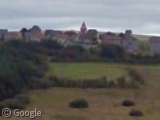
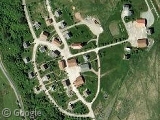
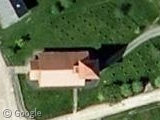
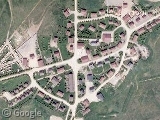
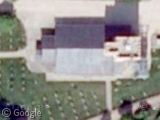
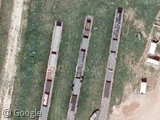
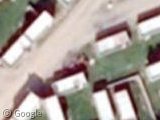
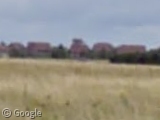
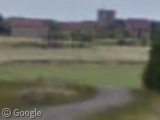
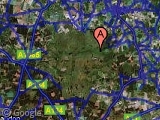
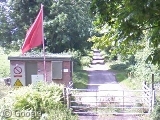
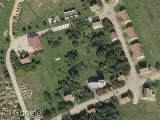
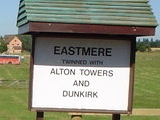
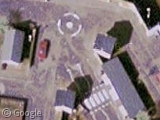
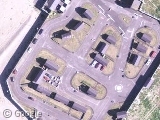
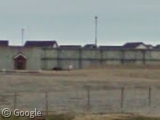
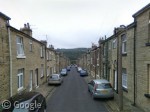
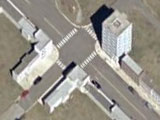
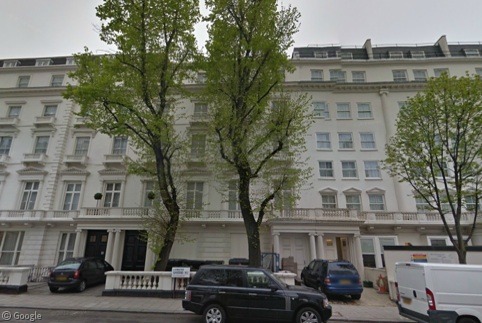
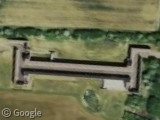
Why did they make a pub in Copehill Down? Surely that should have been a Bierstube? 🙂
Jeremy Clarkson once tested a Mercedes SLK and a Porsche Boxster in one of those towns to see which one was most useful in getting away from shooting soldiers 🙂
Here’s one in the Netherlands:
View Placemark,,2,0.99
Weird that it isn’t blurred like most military installations in the Netherlands (e.g. the base just to the south).
By coincidence I read a story this morning about the British army using fake mosques on a firing range in Yorkshire. Needless to say this hasn’t gone down too well…
See here and here.
Looks rather nice for an upcoming holiday visit.Do i get a free map over this area !?.
Rasmus, t’was Eastmere that Clarkson thrashed around 🙂
I love stuff like this. Nice article Rob.
Voilà, here we go with a tiny little spot in switzerland. The “village” has normal houses but also a bank-kind building with revolving doors 🙂 etc.
There’s also a “rubble” area as a training stage for dogs and what not.
It was actually a lot of fun to fly in with choppers and “take over” the village.
cheers Nik
View Placemark